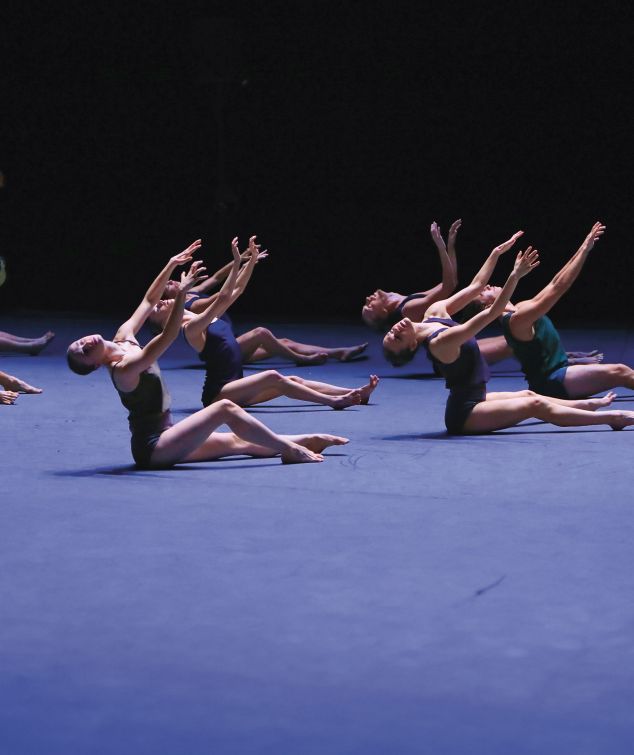Lyon Opera Ballet
As soon as Louis Erlo became director at “Opéra Nouveau de Lyon” in1969, he gave dance a place at the heart of the organisation. For the first time, an opera house outside of Paris devoted entire events to dance and its ballet company.
Ever since, it has been committed to open its doors to any source of inspiration, be it a stream or a river, close or far, harmonious or stormy.
Particularly invigorating for the Ballet was the opening to the world through its first directors, the Italian Vittorio Biagi, then the Yugoslav Milko Speremblek and the New Zealand Gray Veredon, who were all at the forefront of the dance avant- garde of the time.
But, as of 1985, it was Françoise Adret who gave the company a resolutely plural turn. “Mère Adret” as her dancers affectionately called her, had an eye, the gift of the gab and a large address book. Above all, Françoise had travelled widely and her mission was to give the troop a national and international dimension.
She built up a repertory based on a twofold spectrum : great international choreographers at the time still up and coming (including the likes of Jiří Kylián, Mats Ek, Nacho Duato or William Forsythe) and an opportunity given to “young French dance” (Mathilde Monnier, Maryse Delente, or Angelin Preljocaj).
Most ballet companies have had their magic moment–in Lyon, it was a veritable lightning bolt that was to change the course of history. In 1985, no one imagined that a magical doll (from Maguy Marin’s production of Snow White) would present the company with a world tour with no fewer than three trips to the USA in 1987 alone... Three years later, Lyon did it again with Angelin Prejlocaj’s famous rereading of Romeo and Juliet– a new challenge (and the choreographer’s first important commission), and another memorable piece. The die was now cast...
When, in 1991, Greek ballet-master and director Yorkos Loukos succeeded Françoise Adret, the extremely open-minded choreographic palette was a trend that was set and continues to this day. Maguy Marin, who became resident choreographer, set off even more sparks when, in 1993, she inaugurated the new Opéra de Lyon with an offbeat version of Coppélia set in a popular bar in the suburbs of Lyon.
The company continually looks back to the history of dance, at the contemporary scene, and at what it will be tomorrow. Together with a plethora of styles and choreographers of different ages, origins and backgrounds, the strength of the Lyon Opera Ballet comes from the very absence of any particularity–unless it is just that: the highly diverse repertory as sought out by Yorgos Loukos. It goes without saying that it attracts a novelty-loving public and today’s young dancers, who like and are used to changes of style. Even the teachers are in constant motion, changing every month, so as to avoid any routine.
Today, the company has a repertory of 117 pieces, over half of which have been new commissions. A list of the choreographers who have worked in Lyon is a reminder of the importance of the pioneers of new French dance (Mathilde Monnier, Jean-Claude Gallotta) and its young cousins (from Jérôme Bel to Christian Rizzo, Alain Buffard or Rachid Ouramdane).
It also means meeting the guiding lights of modern American dance (Trisha Brown, Merce Cunningham, Lucinda Childs), from post-classic energy (William Forsythe, Benjamin Millepied) to the “next wave” (such as Otto Ramstad).
It means exploring Belgian musicality (de Keersmaeker) Swedish theatricality (Mats Ek), Czech lyricism (Jiří Kylián), or Israeli power (Ohad Naharin, Emanuel Gat). It means getting to work with new talents (Tania Carvalho, Alessandro Sciarroni, Marina Mascarell...). It means...being at the confluences of dance that has never been more open to the world.
Soutenir l'Opéra
Engagez-vous et contribuez à la concrétisation de ses missions et de ses projets
